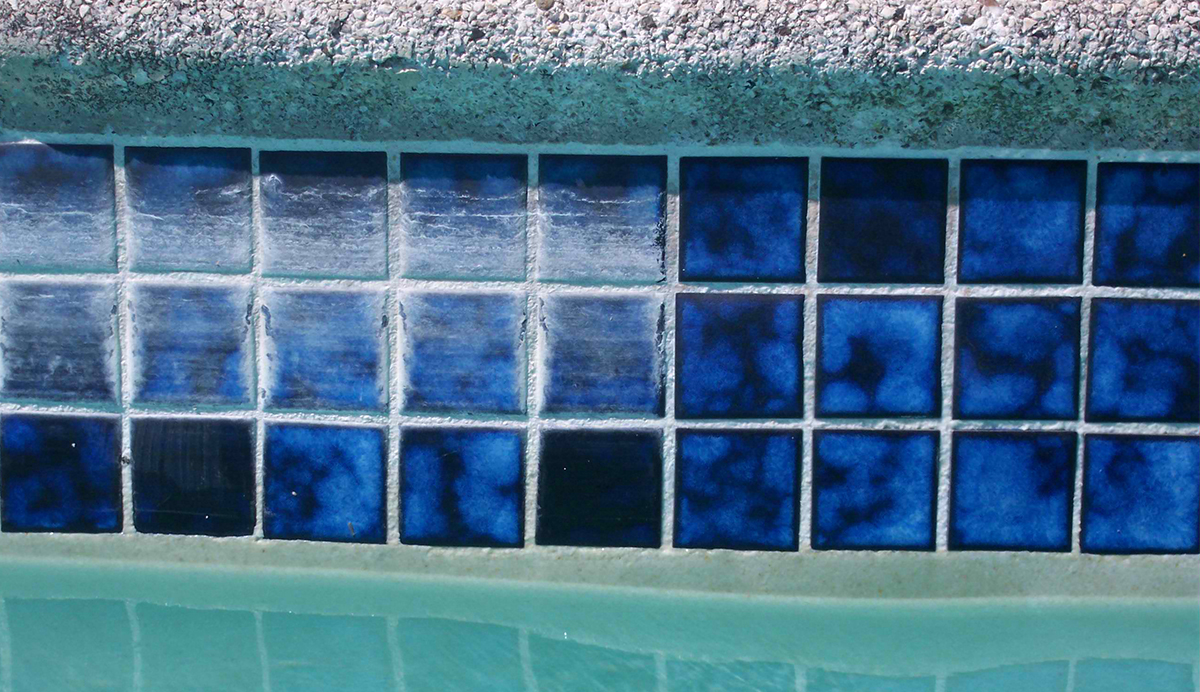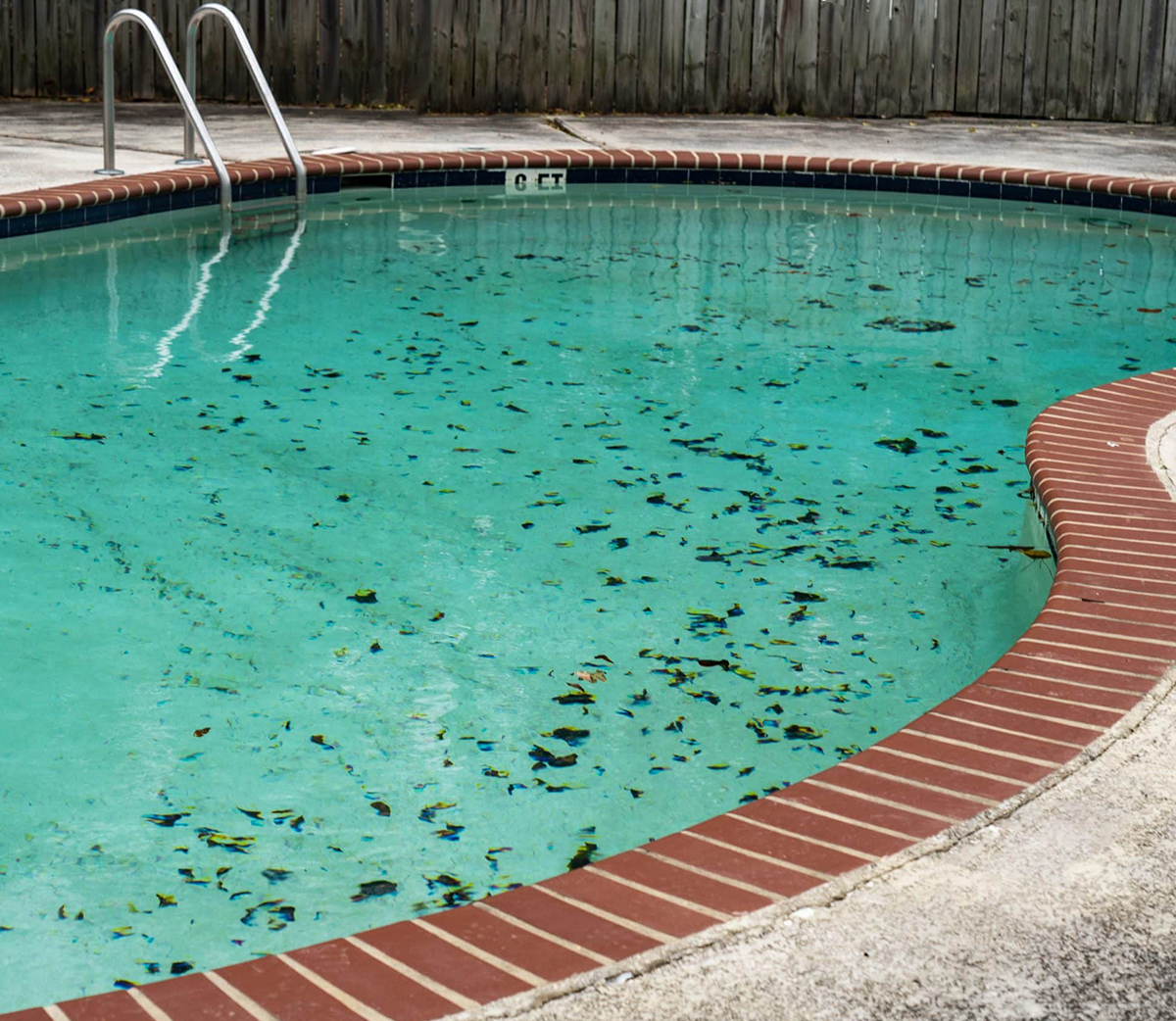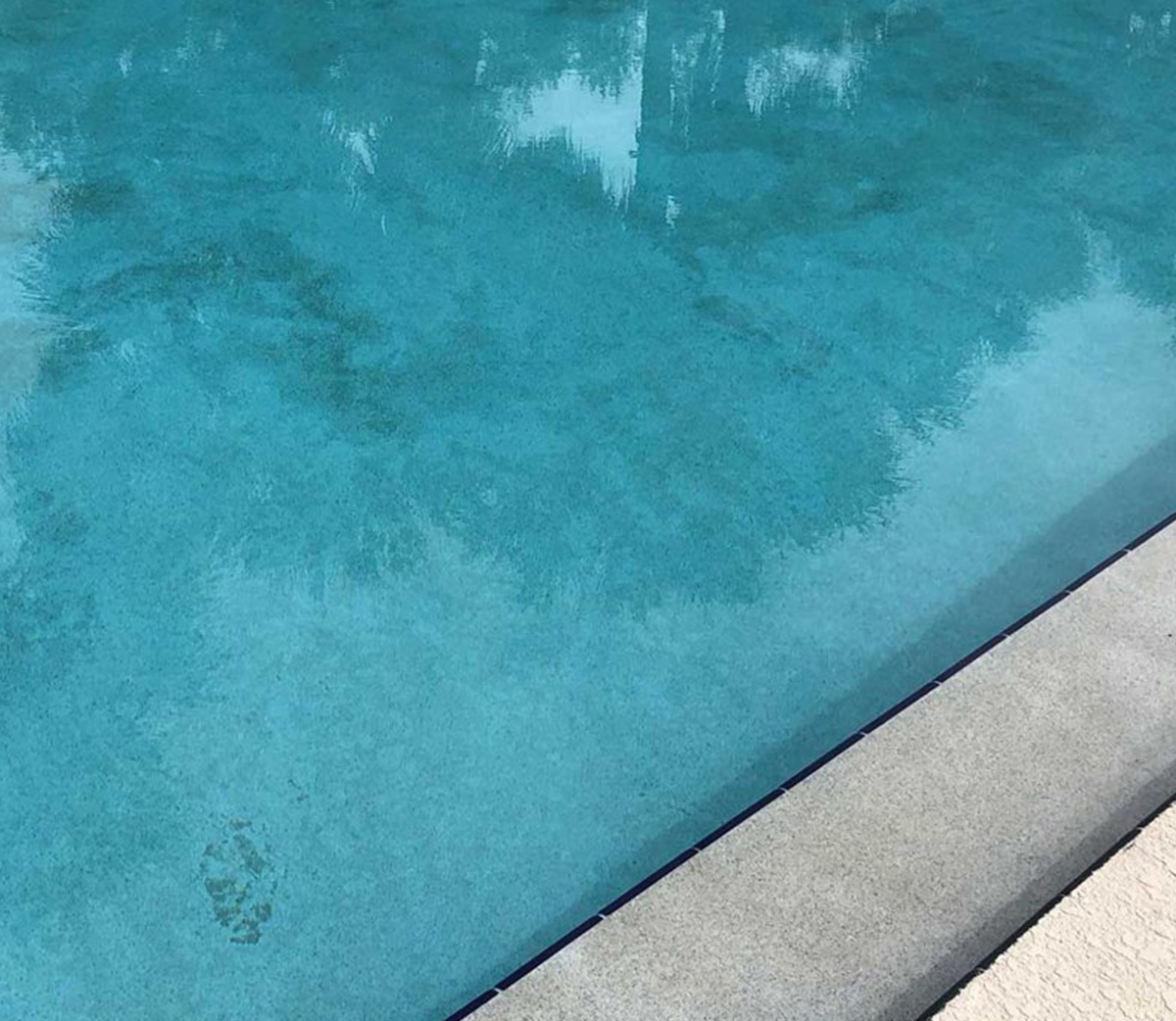When your fibreglass pool looks more like a forgotten, murky fish tank than a pristine oasis, it’s time to get stuck into reviving it!
The results will be worth the effort – a crystal clear, healthy pool for you and the family to enjoy.
This article will guide you through thorough fibreglass pool cleaning and reveal the secrets to removing unsightly surface stains.

Do Fibreglass Pools Require Different Care?
Like a poodle needs different grooming than a labrador, fibreglass pools require a specific kind of TLC!
Why?
Fibreglass has a protective gel layer that gives the pool its finish and colour, and this smooth, nonporous surface is quite delicate.
Here are a few things to remember when fibreglass pool cleaning:
- Skip the scouring. Avoid stainless steel bristled brushes and scouring pads, as these can scratch and damage the gel coating. Wondering what type of brush to buy for fibreglass pool cleaning? A soft-bristle one, such as the Shark 360 brush or Hy-Clor Heavy Duty Broom.
- Be gentle with chemicals. Strong chemical cleaners can discolour and damage your fibreglass pool surfaces. Always opt for milder cleaners specifically designed for fibreglass.
- Watch the water balance. Keeping your pool water chemistry in check is crucial, as incorrect pH, alkalinity, or sanitiser levels can lead to unsightly surface stains and scaling.
Calcium Scaling
Calcium scaling is the build-up of calcium deposits on the surface of a fibreglass pool. These deposits appear as rough, white or grey patches that make the pool surface feel gritty.
Scaling occurs when the pool water is hard, or the pH level is off. You’ll need to treat these problems before you tackle the scaling. Adjust the water chemistry based on test results, possibly adding a pH decreaser to bring levels within the recommended range.
Once the scales have loosened, vacuum your pool to pick up the fallen debris.


Leaf/Organic Stains
Leaf stains cramping your pool’s style? Don’t “leave” them like that!
Leaves can stain a fibreglass pool when they fall into the water and are left to decompose. As the leaves break down, they release tannins – organic matter that adheres to the fibreglass surface and causes brown or green-coloured stains.
To prevent staining, remove leaves promptly from the water’s surface with a leaf scoop and from the bottom of your pool with a leaf rake. Always keep your pool water chemistry balanced, as poor water conditions make it easier for the tannins to stick to the surface.
Pop a suitable pool surface stain remover on the leaf stains following the product’s instructions. After 24 hours, it’s time for some elbow grease! Older, darker stains will need a decent scrub with a soft-bristle brush.
Metal Stains
Have you noticed any mysterious red, green, or black stains on your pool’s walls or floors? Your pool might be crying out for help against metal stains!
Metal stains can result from metal ions in the water. These metal ions react with imbalanced pool water and precipitate, sticking to the fibreglass surface and causing stains.
The most common metal stains are from iron, copper, and manganese, resulting in the abovementioned colours.
Regularly checking water chemistry and using metal sequestrants will help prevent these stains.
To remove preexisting stains, try rubbing a plain, uncoated Vitamin C tablet directly on the stain. The ascorbic acid in the tablet will react with the metal (particularly iron), lifting the stain from the surface.
You can also try Hy-Clor stain remover which is suitable for fibreglass surfaces, some light scrubbing with a gentle brush, and then running your vacuum or cleaner over your pool to pick up any loosened metallic debris.


Cobalting
Though “cobalting” is technically not a stain, it is a condition that occurs when pool water penetrates pinhole gaps in the gelcoat and chemically reacts with the resin beneath by osmosis, creating crystallised areas of black discoloration on the fibreglass pool shell.
Cobalting is typically a bluish or greyish stain.
As with all stains, cobalting is more likely to happen if the pool water is out of balance, particularly if the pH, alkalinity, or sanitiser levels are inaccurate.
Try specialised metal sequestrants that target cobalt and ascorbic acid treatments to remove cobalt stains.
If they persist, try the tried and tested stain remover, scrubbing, and vacuuming combo we’ve discussed for the other stains!
How To Prevent Fibreglass Pool Stains
Instead of spending time and effort cleaning fibreglass pool stains, take preventative measures to stop them from appearing in the first place!
Such measures include:
- Removing debris regularly. Leaves, twigs, and pesky insects can cause ugly stains, so use a leaf shovel or similar tool to scoop them out daily if possible.
- Vacuuming weekly. Run your pool vacuum or other automatic cleaner for at least one weekly cleaning cycle.
- Balancing water chemistry regularly. Test your pool water chemical balance weekly and make any necessary adjustments, as imbalanced water encourages stains to form.
Do You Need Fibreglass Cleaning Materials?
A clean pool means more fun in the sun, so keep yours fresh and stain-free with the help of Hy-Clor’s pool maintenance products.
If you need stain support, don’t hesitate to contact us by filling in the online form! Alternatively, visit your nearest Bunnings Warehouse for our full range of products.
For more tips and tricks on fibreglass pool cleaning, check out our Learning Centre and dive into our video resources.




